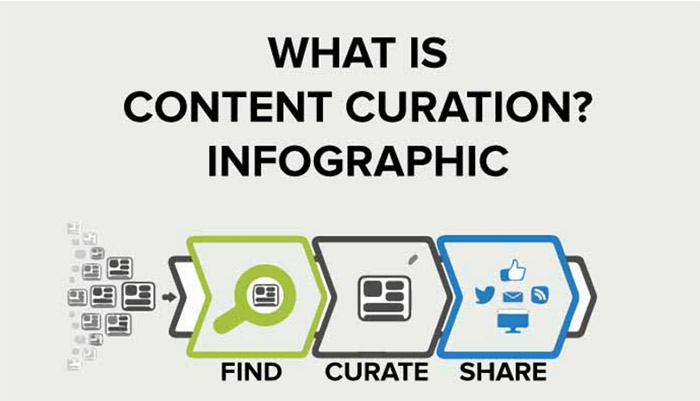The pandemic has acted as a hard reset where several businesses are experiencing the brunt of it. The most massive impact has been over the startups where we have seen some new companies acquiring high sales while some were struggling for bare minimum profits. The pandemic has brought a fresh perspective to the startup environment. Entrepreneurs are carefully looking at building resilient strategies that can help them in achieving sustainable growth. However, market disruptions have always led to some revolutionary innovation that has allowed marketers to utilize more robust technologies.
Small businesses that have less than 20 employees represent 98% of the total businesses in America! Hence, these businesses contribute massively to boosting the overall economic strength of the country. As per the data provided by Global Entrepreneurship Monitor, in 2020, the start-up business rate in the UK was 5.2%, and in the USA, it was 10.7%. Therefore, the emergence of new startups is quite evident.

Source: Unsplash
If you own a startup business, you must realize that having a great or unique business idea isn't enough. A startup needs more resources than just having a good team or funds. If you want to achieve a sustainable level of growth, you need to adopt the best startup marketing strategies. Not all digital marketing tactics drive you the same result or the desired profit.
Therefore, you need to adopt a set of comprehensive startup marketing techniques that enables you to drive maximum returns. Hence, you need a growth marketing mix that involves Product, Performance, and Brand marketing. We have segregated these marketing avenues into different sections below; let's look into them one by one.
Product marketing: Bridging Product Management And Market Communication
Product marketing focuses on the market and the needs of the consumers. It primarily concentrates on understanding the buyer’s behavior which can help your startup generate more business opportunities. Product marketing is beneficial for aligning, positioning, and developing your brand with the current market environment.
Product marketing is a strategic form of growth marketing that plays a crucial role in product management at a product-line level. Some of the critical things you must consider while curating your product marketing strategies are mentioned below.
1. Ensure your sales tools are in place for each product
You must re-evaluate your sales tools every quarter. You have to ensure they are updated regularly. You can implement marketing automation tools to automate lead generation, segregation, conversion, etc.
2. Track your profits, expenses, and profitability
You must make an unwritten rule to track these metrics every month. You should report these metrics every quarter to your senior management.

3. Track the number of consumers for each of your product
You need to keep track of the number of consumers you are generating and losing every quarter. However, the significance of this move goes way beyond numbers. You need to talk to your customers, get to know the reason behind buying your product.
4. Update your sales every twenty-four hours
Salespeople need an amount of information to act upon; hence, you should keep them in the loop. Successful product marketers can work with a sense of urgency.
5. Stay in touch with the latest trends.
You must analyze the industry trends revolving around your product. Keep track of press releases that write about your market niche. When you stay aligned with the latest developments in the industry, you tend to make appropriate choices.
Performance Marketing: Measurable, ROI-Driven Marketing For Startups
Performance marketing is a form of strategic marketing where affiliates get paid when prospects take measurable action over the campaign. A successful consumer strategy is a strategy that balances convenience, consistency, and relevance to bring maximum engagement.
Performance marketing fosters a type of engagement that brings optimal CLV and real business impact. It also helps you monitor your ad spend, reduces wastage, and enables you to optimize your ad spend based on your desired performance. We have mentioned some of the critical performance marketing channels below.

Source: Unsplash
1. Social Media Advertising
Today, marketers have numerous options for running their marketing campaigns via social media platforms. For instance, if your brand needs to gain more online exposure or traffic, you can choose a specific social media platform. You can market your brand to your targeted audiences at scale. Today, marketers utilize Instagram, Facebook, Twitter, Linkedin, Reddit, etc., to drive traffic. The top-performance marketing metrics on social media are shares, likes, retweets, comments, clicks, etc.
2. Native Advertising
The key highlight of using native ads is that they don’t appear like ads. Native ads are contextually aligned with the user content; hence, it doesn’t feel like an ad. Performance marketers can leverage re-targeting opportunities with native ad campaigns, that too at scale! They can utilize the power of content repurposing, wherein they can inform, educate, and convince consumers to take action. Marketers can sequentially target their customers based on their interests and intent.
3. Sponsored Content
Sponsored content is also known as branded content which can prove out to be a precious marketing strategy. Marketers can captivate audiences by creating niche-specific content. A successful sponsored content strategy contains compelling and engaging solutions for user problems. Marketers should remember to align their content with the FTC guidelines to earn the trust of their users.
4. Performance Partnerships
Online users use adblockers and other adblocking extensions; therefore, marketers have to collaborate with premium affiliate marketing programs to attract high-purchase intent consumers. Performance partnerships are excellent for such non-disruptive programs.
A Shift From Performance To Brand Marketing: The Rise Of Consumer Experiences!
What is brand marketing? In simple words, brand marketing promotes your brand as a whole to elevate the sales of your products and services. Primarily, it narrates the story of your products by keeping your brand in the epicenter. Brand marketing involves critical optimizations that are responsible for enhancing your business's CX. We have mentioned some of the essential brand marketing tactics.
1. Developing A User-Centric Website
A high-performing website can turn out to be the most powerful asset of your company. A prospect's or a potential clients' first interaction with a brand can be its website. Hence, having a fully optimized website can prove out to be a helpful marketing asset. On the other hand, ignoring the quality of your website can force customers to move onto competitor websites. More than anything else, a well-designed, functional website represents a good image of your brand. It makes a user think that your brand is trustworthy.

Source: Unsplash
2. Evaluate Your Brand's Purpose
Your brand's purpose defines your brand's identity; it separates your brand from the rest of your market competitors. However, you must also determine your brand's purpose by evaluating the core principles like your work culture, values, and mission. All successful businesses refocus their purpose around their customers. They aim to improve the lives of their consumers, which allows the brand to build brand loyalty.
3. Create Your Visual Identity
The visual identity of your brand plays a significant role in creating an impact on your customers. Hence, your brand's visual language must articulate your brand's identity. Elements like the brand logos, icons, colors, etc., are designs that you should align with your brand's purpose. Almost every startup today creates logos, but many among them miss out on the branding aspect of their logo. You should carefully choose the type of colors or font you want for your brand.
4. Give A Voice To Your Startup
The concept of developing a "voice" for your brand has grown its importance over the years. Be it TV commercials or digital ads; brands have been using these mediums to maintain their brand identity. Today, brands have multiple ways of reaching out to their consumers. We can see an open dialogue between them and their consumers. Hence, these things highlight the importance of brand "voice." Your brand's personality lies in your visual and verbal identity. Through a wide range of platforms across diverse demographics, you must deliver consistent brand messaging.

Source: Unsplash
5. Make Use Of Social Media
Today, social media branding is helping brands to reach a significant chunk of audiences over the internet. Regulating your online presence while delivering a consistent brand voice can help your startup establish a robust brand identity. Social media is an excellent way to improve brand visibility too!
Conclusion
There are numerous strategies and marketing channels through which you can foster a startup's growth. However, you need to evaluate your audience, their purchase behavior, preference, and the nature of your business. Today, generating success for a startup business isn't a cakewalk; you need creative and robust marketing strategies with the given level of competition. If you are looking for product, performance, or brand marketing solutions that can help you generate a measurable amount of ROI, contact our growth marketing experts today!
Creating Timeless Brands That Last Longer
Related Blogs
We explore and publish the latest & most underrated content before it becomes a trend.
4 min read
10 Essential Sales Automation Features Every Small Business Should Know
By Sabah Noor
Subscribe to Saffron Edge Newsletter!

Creating Timeless Brands That Last Longer











